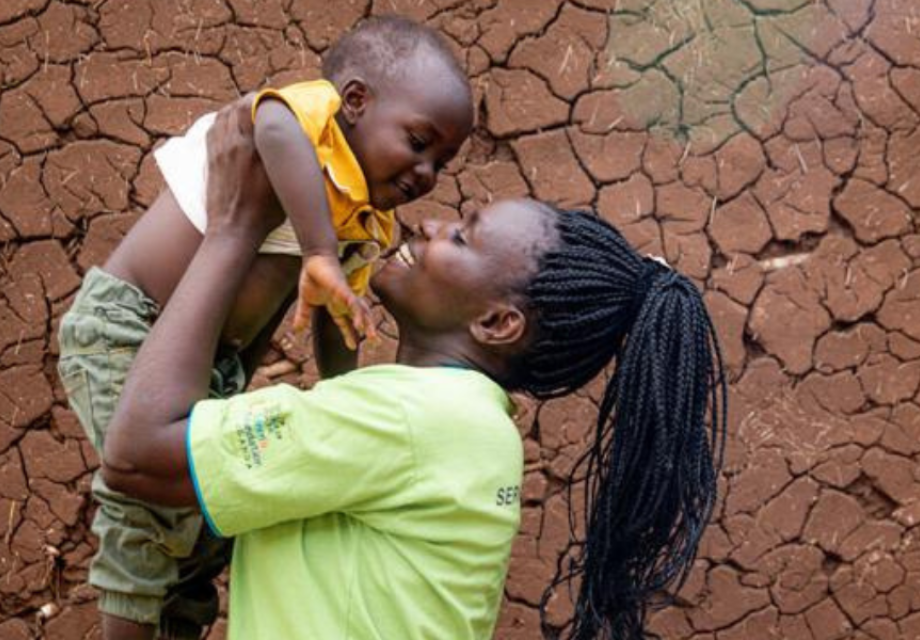Efforts increase to end AIDS among children by 2030
Hester Phillips
10 February 2023
New global alliance announces plans to step up action over the next seven years, with an initial focus on 12 African countries
Efforts to end AIDS among children by 2030 are to increase, with an initial focus on 12 African countries.
What is this about?
An initiative called The Global Alliance to end AIDS in children. It is led by UNAIDS, HIV networks, UNICEF and the World Health Organization. The technical partners are PEPFAR and the Global Fund.
The alliance’s initial focus will be on 12 countries: Angola, Cameroon, Côte d'Ivoire, the Democratic Republic of the Congo, Kenya, Mozambique, Nigeria, South Africa, Tanzania, Uganda, Zambia and Zimbabwe. In each country, HIV prevalence is high, but testing and treatment among pregnant women with HIV is low and/or children with HIV do not have sufficient access to testing and treatment.
On 1 February in Tanzania, the 12 countries officially joined the alliance by signing the Dar-es-Salaam Declaration on ending AIDS in children. This outlines how efforts in these countries will increase to end AIDS among children.
Why is it important?
Globally, only half (52%) of children (ages 0-14) with HIV are on treatment, compared to around three quarters (76%) of adults. And although there has been a lot of progress on providing antiretroviral treatment (ART) to pregnant women with HIV, which prevents vertical (mother-to-child) transmission, some countries are falling behind. And the COVID-19 pandemic has made things worse.
This is the third global initiative to work in this area. The first was the Global Plan, which ran between 2011 and 2015. This significantly improved services to prevent vertical transmission, particularly in East and Southern Africa.
In 2016, the Start Free, Stay Free, AIDS Free Partnership took over from the Global Plan. As well as preventing vertical transmission, it also focused on HIV prevention services for adolescents and young women and HIV treatment for children. But it struggled due to funding shortages, leadership issues and a lack of engagement with national leaders and communities of women with HIV.
What is happening?
The new alliance will focus its efforts on:
-
children (ages 0-14) and adolescents (ages 15-19) with HIV
-
children exposed to HIV
-
pregnant and breastfeeding girls and women with HIV, including from marginalised groups
-
pregnant and breastfeeding girls and women at risk of HIV.
By signing the Dar-es-Salaam Declaration, the 12 countries and the wider alliance have committed to ‘strengthen, coordinate and resource’ the following:
-
testing and treatment for all children and adolescents with HIV and supporting them to remain virally suppressed
-
treatment and care for all pregnant and breastfeeding women and supporting them to stay in care
-
digital technologies to reach adolescents and young people
-
comprehensive, integrated HIV services
-
protecting mothers from HIV during pregnancy and breastfeeding
-
ending the stigma, discrimination and gender inequities experienced by women, children and adolescents affected by HIV
-
working with communities, including men, to prevent gender-based violence and address harmful gender norms
-
protecting budgets for ending AIDS in children
-
partnering with networks and organisations led by people with HIV
-
monitoring and sharing both progress and learning.
What does this mean for HIV services?
This renewed focus could help move forward action on HIV prevention and treatment for women and children, especially in the 12 initial focus countries. There will be a second and third phase, in which more countries will be asked to join the alliance, but which countries aren’t yet known.
The alliance will have a major focus on advocacy, and this could provide an opportunity for those working in the HIV sector to get involved. National dialogues will be held to develop advocacy roadmaps, and other initiatives are planned to encourage community involvement.
During the signing of the Dar-es-Salaam Declaration, Lilian Mworeko, Executive Director of the International Community of Women living with HIV in Eastern Africa, welcomed the initiative. Speaking on behalf of ICW, Y+ Global and GNP+, she said: “We have helped shape the Global Alliance and have ensured that human rights, community engagement and gender equality are pillars of the Alliance. We believe a women-led response is key to ending AIDS in children.”
Get our news and blogs by email
Keep up-to-date with all our latest news stories and blogs by signing up to the Be in the KNOW news digest.
